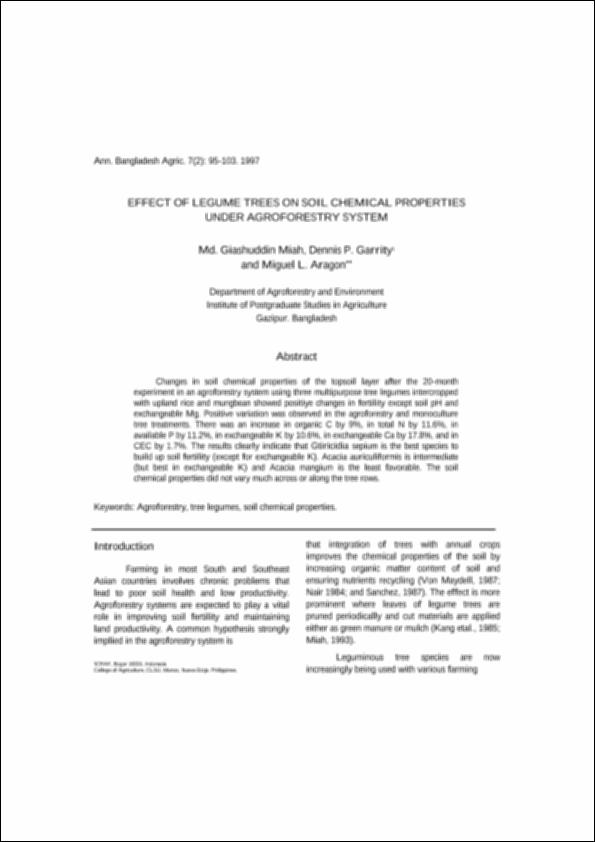| dc.description.abstract | Abstract :
Changes in soil chemical properties of the topsoil layer after the 20-month experiment in an agroforestry system using three multipurpose tree legumes intercropped with upland rice and mungbean showed positiye changes in fertility except soil pH and exchangeable Mg. Positive variation was observed in the agroforestry and monoculture tree treatments. There was an increase in organic C by 9%, in total N by 11.6%, in available P by 11.2%, in exchangeable K by 10.6%, in exchangeable Ca by 17.8%, and in CEC by 1.7%. The results clearly indicate that Gtiricidia sepium is the best species to build up soil fertility (except for exchangeable K). Acacia auriculiformis is intermediate (but best in exchangeable K) and Acacia mangium is the least favorable. The soil chemical properties did not vary much across or along the tree rows. | en_US |

